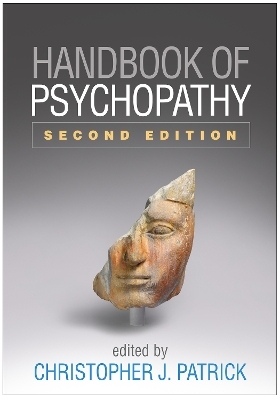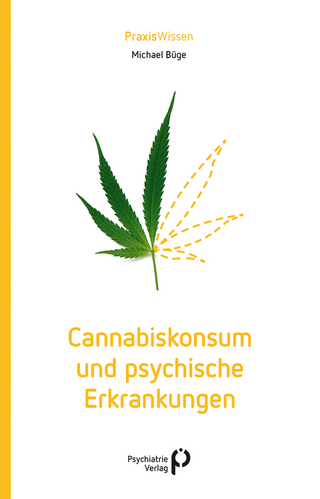
Handbook of Psychopathy, Second Edition
Guilford Press (Verlag)
978-1-4625-3513-2 (ISBN)
New to This Edition
*Extensively revised with more than a decade's theoretical, empirical, and clinical advances.
*Many new authors and topics.
*Expanded coverage of phenotypic facets, with chapters on behavioral disinhibition, callous–unemotional traits, and boldness.
*Chapters on DSM-5, clinical interviewing, cognitive and emotional processing, and serial murder.
*Significantly updated coverage of etiology, assessment methods, neuroimaging research, and adult and juvenile treatment approaches.
Christopher J. Patrick, PhD, is Professor of Psychology at Florida State University. His research interests include psychopathy, antisocial behavior, substance abuse, personality, fear and fearlessness, psychophysiology, and affective and cognitive neuroscience, and he is author of more than 270 articles and chapters on these topics. Dr. Patrick is past president of the Society for the Scientific Study of Psychopathy (SSSP) and the Society for Psychophysiological Research (SPR), a recipient of Early Career awards from SPR and the American Psychological Association (APA), and a recipient of SSSP’s Lifetime Career Contribution award. He is also a Fellow of APA and of the Association for Psychological Science. Dr. Patrick served as a workgroup member for the Research Diagnostic Criteria initiative of the National Institute of Mental Health and as a scientific advisor to the DSM-5 Personality Disorders Workgroup. He is currently a member of the American Psychiatric Association’s Review Committee for Externalizing Disorders and Personality Disorders, which evaluates proposed changes to DSM-5.
I. Theoretical and Empirical Foundations of Psychopathy
1. Psychopathy as Masked Pathology, Christopher J. Patrick
2. Psychopathy, Sociopathy, and Antisocial Personality Disorder, David T. Lykken
Commentary: A Minnesota Perspective on Lykken's "Psychopathy, Sociopathy, and Antisocial Personality Disorder," William G. Iacono
3. The PCL-R Assessment of Psychopathy, Robert D. Hare, Craig S. Neumann, & Andreas Mokros
4. The Response Modulation Hypothesis: Formulation, Development, and Implications for Psychopathy, Rachel Bencic Hamilton & Joseph P. Newman
5. Temperament Risk Factors for Psychopathy, Don C. Fowles
II. Distinct Phenotypic Facets of Psychopathy
6. Externalizing Proneness and Psychopathy, Lindsay D. Nelson & Jens Foell
7. Callous–Unemotional Traits, Essi Viding & Eva R. Kimonis
8. Boldness: Conceptual and Methodological Issues, Scott O. Lilienfeld, Ashley L. Watts, Sarah Francis Smith, & Robert D. Latzman
III. Assessment and Diagnosis of Psychopathy
9. Capturing Psychopathic Personality: Penetrating the Mask of Sanity through Clinical Interview, David J. Cooke & Caroline Logan
10. The Self-Report Assessment of Psychopathy: Challenges, Pitfalls, and Promises, Martin Sellbom, Scott O. Lilienfeld, Katherine A. Fowler, & Kristen L. McCrary
11. Psychopathy and Personality: An Articulation of the Benefits of a Trait-Based Approach, Donald R. Lynam, Joshua D. Miller, & Karen J. Derefinko
12. Psychopathy and DSM-5 Psychopathology, Thomas A. Widiger & Cristina Crego
13. Variants (“Subtypes”) of Psychopathy, Brian M. Hicks & Laura E. Drislane
IV. Etiology and Mechanisms of Psychopathy
14. Genetic and Environmental Influences on Psychopathy and Antisocial Behavior, Irwin D. Waldman, Soo Hyun Rhee, Devon LoParo, & Yunsoo Park
15. Family Background and Psychopathy, David P. Farrington & Henriette Bergstrøm
16. The Neuroanatomical Bases of Psychopathy: A Review of Brain Imaging Findings, Yaling Yang & Adrian Raine
17. Psychopathy and Brain Function: Insights from Neuroimaging Research, R. James R. Blair, Harma Meffert, Soonjo Hwang, & Stuart F. White
18. Cognitive and Emotional Processing in Psychopathy, Christopher J. Patrick
19. Psychopathy and Developmental Pathways to Antisocial Behavior in Youth, Paul J. Frick & Monica A. Marsee
V. Psychopathy in Specific Subpopulations
20. Psychopathy in Children and Adolescents: Assessment and Critical Questions Regarding Conceptualization, Randall T. Salekin, Henrik Andershed, & Abby P. Clark
21. Psychopathy in Women: Assessment, Manifestations, and Etiology, Edelyn Verona & Jennifer Vitale
22. Cultural and Ethnic Variations in Psychopathy, Kostas Fanti, Alexandros Lordos, Elizabeth A. Sullivan, & David S. Kosson
23. Deviance at Its Darkest: Serial Murder and Psychopathy, Eric W. Hickey, Bethany K. Walters, Laura E. Drislane, Isabella M. Palumbo, & Christopher J. Patrick
24. Successful Psychopathy, Stephen D. Benning, Noah C. Venables, & Jason R. Hall
VI. Clinical and Applied Issues in Psychopathy
25. Psychopathy and Aggression, Stephen Porter, Michael T. Woodworth, & Pamela J. Black
26. Psychopathy and Substance Use Disorders, Jarrod M. Ellingson, Andrew K. Littlefield, Alvaro Vergés, & Kenneth J. Sher
27. The Role of Psychopathy in Sexual Coercion against Women: An Update and Expansion, Raymond A. Knight & Jean-Pierre Guay
28. Risk for Criminal Recidivism: The Role of Psychopathy, Kevin S. Douglas, Gina M. Vincent, & John F. Edens
29. Treatment of Adults and Juveniles with Psychopathy, Devon Polaschek & Jennifer L. Skeem
30. Legal and Ethical Issues in the Assessment and Treatment of Psychopathy, John F. Edens, John Petrila, & Shannon E. Kelley
VII. Conclusions and Future Directions
31. Understanding Psychopathy: Where We Are, Where We Can Go, Dustin B. Wygant, Dustin A. Pardini, Abigail A. Marsh, & Christopher J. Patrick
| Erscheinungsdatum | 13.06.2018 |
|---|---|
| Verlagsort | New York |
| Sprache | englisch |
| Maße | 178 x 254 mm |
| Gewicht | 1634 g |
| Themenwelt | Geisteswissenschaften ► Psychologie |
| Medizin / Pharmazie ► Medizinische Fachgebiete ► Psychiatrie / Psychotherapie | |
| Medizin / Pharmazie ► Studium | |
| ISBN-10 | 1-4625-3513-5 / 1462535135 |
| ISBN-13 | 978-1-4625-3513-2 / 9781462535132 |
| Zustand | Neuware |
| Haben Sie eine Frage zum Produkt? |
aus dem Bereich


